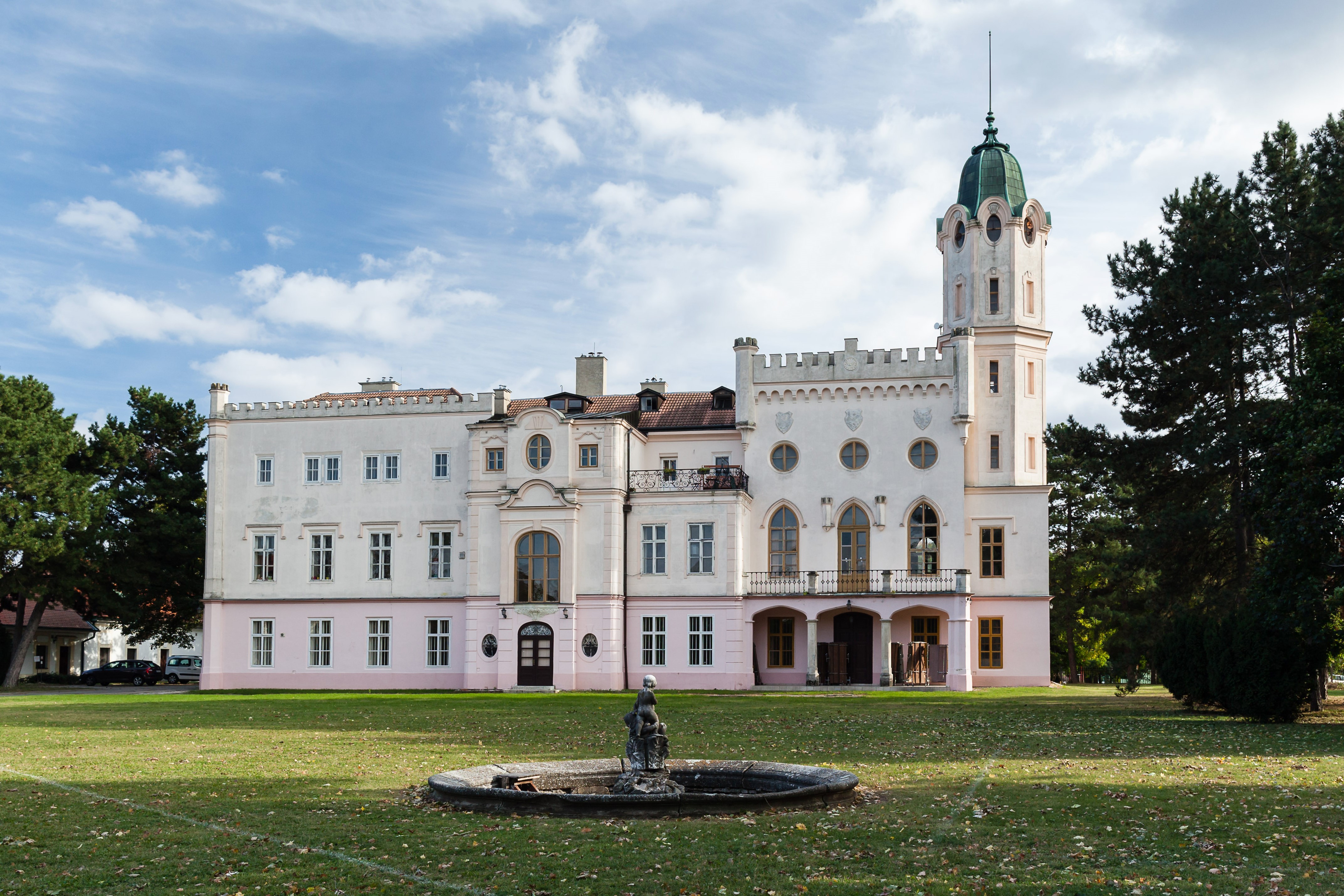The Chateau and Park in Ivanka pri Dunaji

At the centre of the village lies its historically most significant secular building – the Ivanka chateau. The building is today much altered in appearance from the time of its original construction.
Construction of the chateau was begun by Antal Grassalkovich I, the president of the Hungarian Royal Chamber, after 1763. Because his palace in Bratislava was being finished at the same time, it is thought that the same architect, Mayerhoffer, was involved in the construction of his countryside residence in Ivanka.
The chateau was in the hands of the Grassalkovich family until 1841 when, after its male line died out upon the death of Antal III, it was put up for auction.
The chateau and its property were bought by Mihailo Obrenović, a Serb Count – and for a short time the reigning Prince of Serbia – who lived in exile in Austria in 1842-1858. He set up his countryside residence in Ivanka. In 1853, Obrenović married a Hungarian aristocrat, Countess Julia Hunyady. In 1855, Ľudovít Štúr, who was living under police guard in Modra, visited Obrenović in secret at the chateau – a meeting marked by a plaque in front of the chateau. The chateau was renovated by Obrenović in 1856 following the great fire of Ivanka. The southwest wing of the building was pulled down and replaced with a tower which served as a water tower. At the start of the 20th century the new owners, the Hunyady family, renovated the chateau in a mixture of Neogothic and Art Nouveau styles. In its current form, the building is modelled on medieval architecture with its façade displaying a combination of Romanesque and Gothic features. The chateau was originally surrounded by an extensive French formal park.
In 1943, Jesuits moved into the property, having bought it from Count Hunyady, and turned it into a dormitory for young students from their secondary school in Bratislava. In 1948, the building was expropriated by the communists, passing into the hands of the Department of Agriculture. After 1989, it was returned to the Jesuits. The building was renovated and is currently home to the Anton Neuwirth Collegium, an educational institution founded along the lines of traditional Oxford colleges. The collegium offers a two-year programme for university students focused on philosophy, the relationship between Christianity and culture, and personal growth.
Because of its great architectural and historical value, the chateau and park have been declared a National Heritage Site.